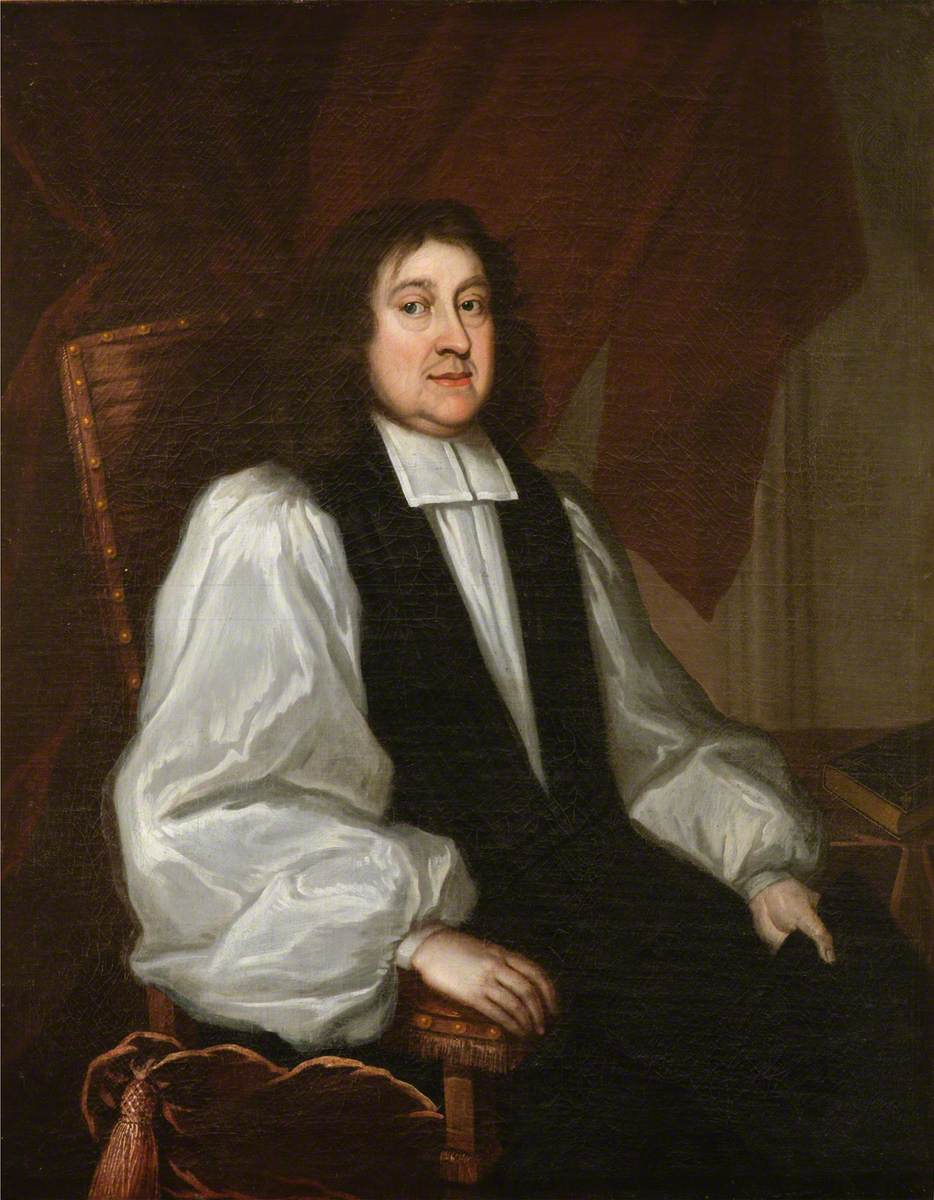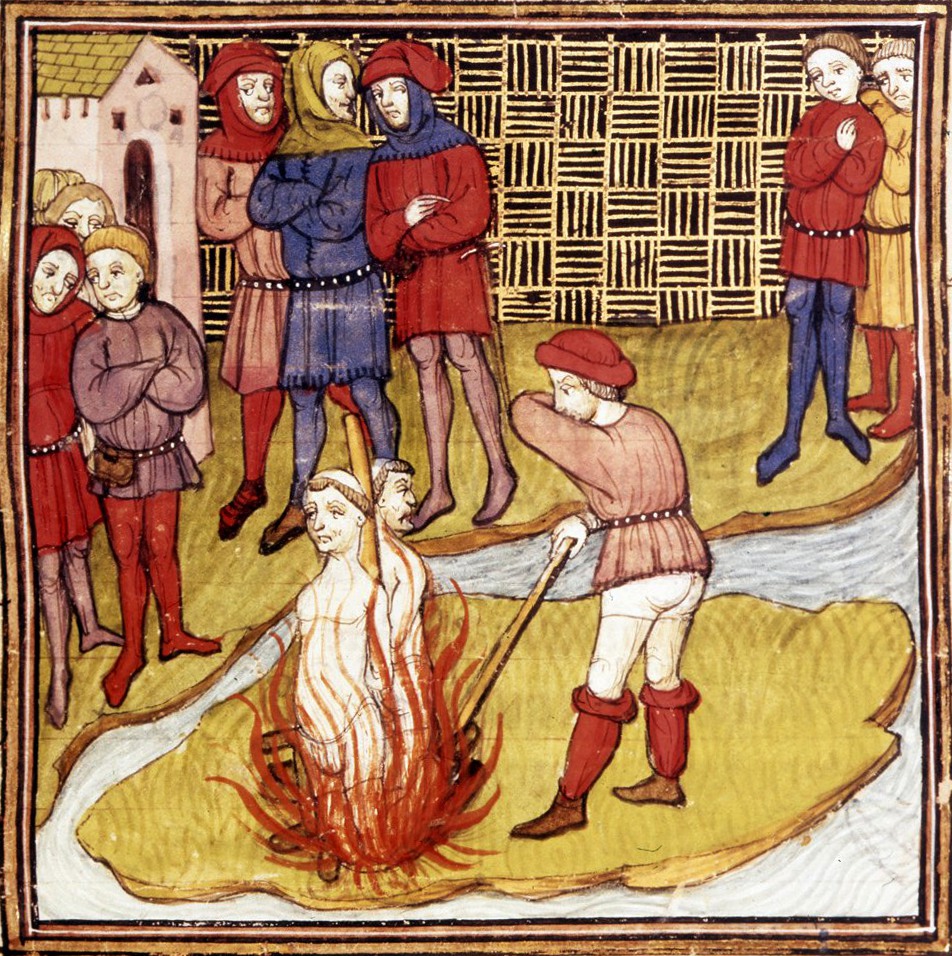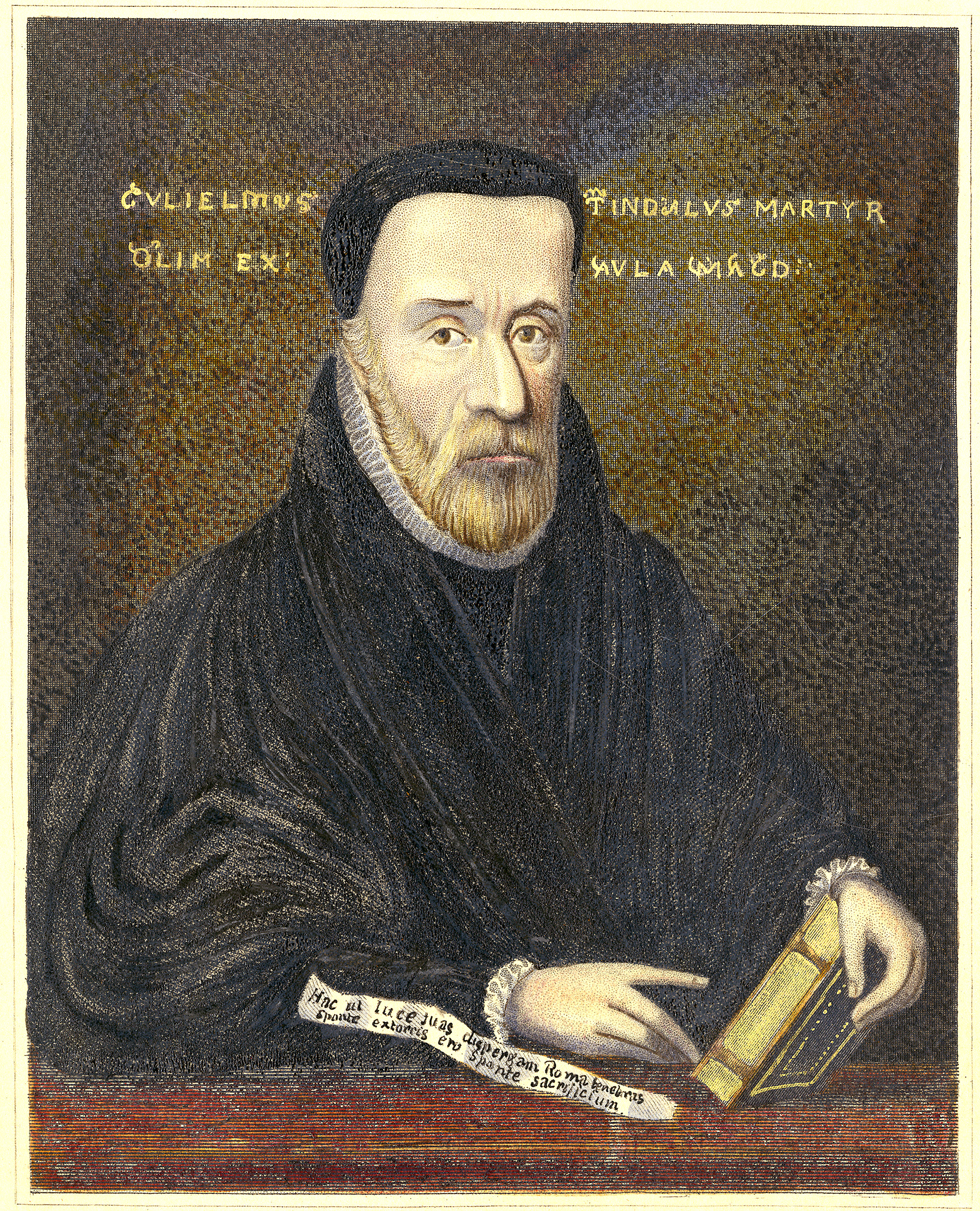|
Joan Bocher
Joan Bocher (died 2 May 1550 in Smithfield, London) was an English Anabaptist burned at the stake for heresy during the English Reformation in the reign of Edward VI. She has also been known as Joan Boucher or Butcher, or as Joan Knell or Joan of Kent. Life Bocher's origins are unclear, but it is known that families named Bocher and Knell lived in the area round Romney Marsh. She was associated with Anabaptists in Kent, some of them immigrants who had fled persecution in the low countries (Belgium, the Netherlands, and Luxembourg). In the 1530s and 1540s she was "much in favour in reforming circles" in Canterbury.Andrew Hope, ''Joan Bocher'' in ''Oxford Dictionary of National Biography'' (2004) Her first conflict with church and state came after she spoke against the sacrament of the altar, but she was released from imprisonment by a commissary of Thomas Cranmer and Christopher Nevinson. This leniency was held against Nevinson when he was charged in 1543 with involvement in the P ... [...More Info...] [...Related Items...] OR: [Wikipedia] [Google] [Baidu] |
Smithfield, London
Smithfield, properly known as West Smithfield, is a district located in Central London, part of Farringdon Without, the most westerly ward of the City of London, England. Smithfield is home to a number of City institutions, such as St Bartholomew's Hospital and livery halls, including those of the Butchers' and Haberdashers' Companies. The area is best known for the Smithfield meat market, which dates from the 10th century, has been in continuous operation since medieval times, and is now London's only remaining wholesale market. Smithfield's principal street is called ''West Smithfield'', and the area also contains London's oldest surviving church, St Bartholomew-the-Great, founded in AD 1123. The area has borne witness to many executions of heretics and political rebels over the centuries, as well as Scottish knight Sir William Wallace, and Wat Tyler, leader of the Peasants' Revolt, among many other religious reformers and dissenters. Smithfield Market, a Grade II li ... [...More Info...] [...Related Items...] OR: [Wikipedia] [Google] [Baidu] |
Gilbert Burnet
Gilbert Burnet (18 September 1643 – 17 March 1715) was a Scottish philosopher and historian, and Bishop of Salisbury. He was fluent in Dutch, French, Latin, Greek, and Hebrew. Burnet was highly respected as a cleric, a preacher, an academic, a writer and a historian. He was always closely associated with the Whig party, and was one of the few close friends in whom King William III confided. Early life: 1643–1674 Burnet was born at Edinburgh, Scotland, in 1643, the son of Robert Burnet, Lord Crimond, a Royalist and Episcopalian lawyer, who became a judge of the Court of Session, and of his second wife Rachel Johnston, daughter of James Johnston, and sister of Archibald Johnston of Warristoun, a leader of the Covenanters. His father was his first tutor until he began his studies at the University of Aberdeen, where he earned a Master of Arts in Philosophy at the age of thirteen. He studied law briefly before changing to theology. He did not enter into the ministry at that ... [...More Info...] [...Related Items...] OR: [Wikipedia] [Google] [Baidu] |
People Executed For Heresy
A person ( : people) is a being that has certain capacities or attributes such as reason, morality, consciousness or self-consciousness, and being a part of a culturally established form of social relations such as kinship, ownership of property, or legal responsibility. The defining features of personhood and, consequently, what makes a person count as a person, differ widely among cultures and contexts. In addition to the question of personhood, of what makes a being count as a person to begin with, there are further questions about personal identity and self: both about what makes any particular person that particular person instead of another, and about what makes a person at one time the same person as they were or will be at another time despite any intervening changes. The plural form "people" is often used to refer to an entire nation or ethnic group (as in "a people"), and this was the original meaning of the word; it subsequently acquired its use as a plural form of per ... [...More Info...] [...Related Items...] OR: [Wikipedia] [Google] [Baidu] |
People From The City Of London
A person ( : people) is a being that has certain capacities or attributes such as reason, morality, consciousness or self-consciousness, and being a part of a culturally established form of social relations such as kinship, ownership of property, or legal responsibility. The defining features of personhood and, consequently, what makes a person count as a person, differ widely among cultures and contexts. In addition to the question of personhood, of what makes a being count as a person to begin with, there are further questions about personal identity and self: both about what makes any particular person that particular person instead of another, and about what makes a person at one time the same person as they were or will be at another time despite any intervening changes. The plural form "people" is often used to refer to an entire nation or ethnic group (as in "a people"), and this was the original meaning of the word; it subsequently acquired its use as a plural form of per ... [...More Info...] [...Related Items...] OR: [Wikipedia] [Google] [Baidu] |
1550 Deaths
Year 155 ( CLV) was a common year starting on Tuesday (link will display the full calendar) of the Julian calendar. At the time, it was known as the Year of the Consulship of Severus and Rufinus (or, less frequently, year 908 ''Ab urbe condita''). The denomination 155 for this year has been used since the early medieval period, when the Anno Domini calendar era became the prevalent method in Europe for naming years. Births * Cao Cao, Chinese statesman and warlord (d. 220) * Dio Cassius, Roman historian (d. c. 235) * Tertullian, Roman Christian theologian (d. c. 240) * Sun Jian, Chinese general and warlord (d. 191) Deaths * Pius I, Roman bishop * Polycarp, bishop of Smyrna (b. AD 65 AD 65 ( LXV) was a common year starting on Tuesday (link will display the full calendar) of the Julian calendar. At the time, it was known as the Year of the Consulship of Nerva and Vestinus (or, less frequently, year 818 ''Ab urbe condita''). ...) References {{DEFAULTSORT:155 [...More Info...] [...Related Items...] OR: [Wikipedia] [Google] [Baidu] |
Global Anabaptist Mennonite Encyclopedia Online
The Global Anabaptist Mennonite Encyclopedia Online (GAMEO) is an online encyclopedia of topics relating to Mennonites and Anabaptism. The mission of the project is to provide free, reliable, English-language information on Anabaptist-related topics. GAMEO was started in 1996 as the Canadian Mennonite Encyclopedia Online by the Mennonite Historical Society of Canada. In 2005 the project was renamed to its current title and the scope expanded with the additional partnership of the Mennonite Brethren Historical Commission and the Mennonite Church USA Archives. The collaboration has since further expanded, with the addition of the Mennonite Central Committee in 2006, the Mennonite World Conference in January 2007, and the Institute for the Study of Global Anabaptism in 2011. Starting as a database of Anabaptist groups in Canada, GAMEO secured rights to copy and update the Mennonite Encyclopedia published by Herald Press in the 1950s and 1990. A project goal was to have the ent ... [...More Info...] [...Related Items...] OR: [Wikipedia] [Google] [Baidu] |
List Of People Burned As Heretics
This is a list of people burned after being deemed heretics by different Christian Churches. The list does not attempt to encompass the list of those executed by burning for other reasons (such as victims of witch hunts or other persecutions). The Catholic Encyclopedia states that "with the formal recognition of the Church by the State and the increase of ecclesiastical penalties proportioned to the increase of ecclesiastical offences, came an appeal from the Church to the secular arm for aid in enforcing the said penalties, which aid was always willingly granted...deviations from the Catholic Faith, were by the State made punishable in civil law and secular penalties were attached to them." Canon 3 of the Ecumenical Fourth Council of the Lateran, 1215 required secular authorities to "exterminate in the territories subject to their jurisdiction all heretics" pointed out by the Catholic Church, resulting in the inquisitor executing certain people accused of heresy. Some laws a ... [...More Info...] [...Related Items...] OR: [Wikipedia] [Google] [Baidu] |
New Testament
The New Testament grc, Ἡ Καινὴ Διαθήκη, transl. ; la, Novum Testamentum. (NT) is the second division of the Christian biblical canon. It discusses the teachings and person of Jesus, as well as events in first-century Christianity. The New Testament's background, the first division of the Christian Bible, is called the Old Testament, which is based primarily upon the Hebrew Bible; together they are regarded as sacred scripture by Christians. The New Testament is a collection of Christian texts originally written in the Koine Greek language, at different times by various authors. While the Old Testament canon varies somewhat between different Christian denominations, the 27-book canon of the New Testament has been almost universally recognized within Christianity since at least Late Antiquity. Thus, in almost all Christian traditions today, the New Testament consists of 27 books: * 4 canonical gospels (Matthew, Mark, Luke, and John) * The Acts of the Apostl ... [...More Info...] [...Related Items...] OR: [Wikipedia] [Google] [Baidu] |
William Tyndale
William Tyndale (; sometimes spelled ''Tynsdale'', ''Tindall'', ''Tindill'', ''Tyndall''; – ) was an English biblical scholar and linguist who became a leading figure in the Protestant Reformation in the years leading up to his execution. He is well known as a translator of the Bible into English, and was influenced by the works of prominent Protestant Reformers such as Martin Luther. Luther's translation of the Christian Bible into German appeared in 1522. Tyndale's translation was the first English Bible to draw directly from Hebrew and Greek texts, the first English translation to take advantage of the printing press, the first of the new English Bibles of the Reformation, and the first English translation to use ''Jehovah'' ("Iehouah") as God's name as preferred by English Protestant Reformers. It was taken to be a direct challenge to the hegemony both of the Catholic Church and of those laws of England maintaining the church's position. The work of Tyndale contin ... [...More Info...] [...Related Items...] OR: [Wikipedia] [Google] [Baidu] |
Anne Askew
Anne Askew (sometimes spelled Ayscough or Ascue) married name Anne Kyme, (152116 July 1546) was an English writer, poet, and Anabaptist preacher who was condemned as a heretic during the reign of Henry VIII of England. She and Margaret Cheyne are the only women on record known to have been both tortured in the Tower of London and burnt at the stake. She is also one of the earliest known female poets to compose in the English language. Biography Anne Askew was born in 1521 in Lincolnshire, England, to Sir William Askew, a wealthy landowner, and Elizabeth Wrotessley, of Reading, Berkshire. Her father was a gentleman in the court of King Henry VIII, as well as a juror in the trial of Anne Boleyn's co-accused. She was the fourth of five children, which included her brothers Francis, Edward and sisters Martha and Jane. She also had two stepbrothers, Christopher and Thomas, by her father's second wife Elizabeth Hutton. She was also related to Robert Aske, who led the Pilgri ... [...More Info...] [...Related Items...] OR: [Wikipedia] [Google] [Baidu] |
Robert Parsons (Jesuit)
Robert Persons (24 June 1546 – 15 April 1610), later known as Robert Parsons, was an English Jesuit priest. He was a major figure in establishing the 16th-century "English Mission" of the Society of Jesus. Early life Robert Persons was born at Nether Stowey, Somerset, to yeoman parents. Through the favour of local parson named John Hayward, a former monk, he was educated in 1562 at St. Mary's Hall, Oxford. After completing his degrees with distinction, he became a fellow and tutor at Balliol in 1568.Pollen, John Hungerford. "Robert Persons." The Catholic Encyclopedia Vol. 11. New York: Robert Appleton Company, 1911. 25 March 2016 College fellow and priest As a Fellow of Balliol College, Persons clashed with the Master there,[...More Info...] [...Related Items...] OR: [Wikipedia] [Google] [Baidu] |
Marian Persecutions
Protestants were executed in England under heresy laws during the reigns of Henry VIII (1509–1547) and Mary I (1553–1558). Radical Christians also were executed, though in much smaller numbers, during the reigns of Edward VI (1547–1553), Elizabeth I (1558–1603), and James I (1603–1625). The excesses of this period were recorded in Foxe's ''Book of Martyrs''. Protestants in England and Wales were executed under legislation that punished anyone judged guilty of heresy against Catholicism. Although the standard penalty for those convicted of treason in England at the time was execution by being hanged, drawn and quartered, this legislation adopted the punishment of burning the condemned. At least 280 people were recognised as burned over the five years of Mary I's reign by contemporary sources. Historical context English Reformation The English Reformation had put a stop to Catholic ecclesiastical governance in England, asserted royal supremacy over the English C ... [...More Info...] [...Related Items...] OR: [Wikipedia] [Google] [Baidu] |

_1938.jpg)




.jpg)